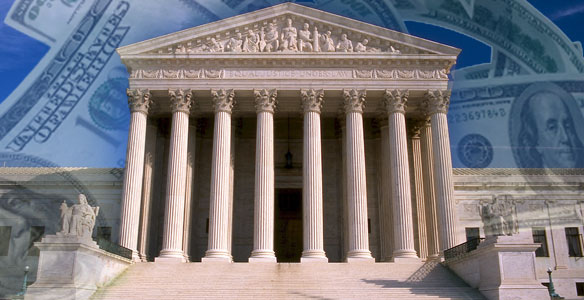The Biggest Successful Lawsuit Ever Settled; $206 Billion Settlement From Big Tobacco

The Master Settlement Agreement (MSA) of 1998 involved the 4 major tobacco companies, 46 US states, the District of Columbia and five US territories. It became the largest civil litigation settlement in US history.
As early as the 1950’s, individuals within the United States began suing companies who were responsible for manufacturing and marketing cigarettes. Most of the claims revolved around the negligent manufacturing, negligent advertising, fraud, and violation of state consumer protection statutes. However, these suits were rarely successful. In the meantime, evidence of the destructive health effects of cigarettes continued to mount.
The states decided to take matters into their own hands.
In 1994, Mississippi Attorney General Michael Moore decided that the states had had enough. The continued health problems among various state populations, caused by cigarettes, had resulted in huge costs to the state’s public health systems.
More than 40 states joined the fight against the tobacco industry and it became clear that successfully defending the multitude of suits would be almost impossible for them. The states were alleging a wide array of legal theories and sought huge damages for Medicaid and other public health expenses.
The four largest United States tobacco companies—Phillip Morris, Inc., R. J. Reynolds, Brown & Wiliamson, and Lorillard—decided to ban together and attempt to negotiate a single resolution. The National Association of Attorneys General and the Majors also jointly petitioned Congress for one global resolution. On June 20th of 1997, Moore announced a proposed $365.5 billion settlement; an agreement to capitulate to FDA regulation, and larger, stronger warning labels.
In exchange, the cigarette companies would be freed from future class-action suits and litigation costs would be capped. This proposal, called the 1997 National Settlement, led to the eventual Multistate Settlement Agreement, which was similar in many ways. The first proposal called for one third of all funds generated to combat teenage smoking, however, the MSA does not place any restrictions or guidelines on the funding. The first proposal also called for FDA oversight, advertising restrictions, immunity from state prosecutions, elimination of punitive damages in individual suits, and prohibition of the use of class actions. The baseline payment of the MSA was $200 billion, paid out over 25 years.
This agreement required an act of Congress in order for it to be passed. Senator John McCain, then a future presidential candidate, tried to pass an even more aggressive version of the bill, but it was rejected. Meanwhile in July of 1997, individual states began to settle with the tobacco industries. Finally, by November of 1998, 46 states (which had not yet settled) entered into the MSA with the tobacco industry. Florida, Mississippi, Texas, and Minnesota were the states which had already settled with the industry, but of those four, only Minnesota and Mississippi entered into the MSA. The others kept their original settlement.
At the time of the settlement, the four big tobacco companies represented 97% of the American tobacco industry. However, subsequently, over 41 new tobacco companies have entered the industry. These companies were encouraged to sign the agreement with the stipulation that they will only have to make annual payments if the new signees increase their market share beyond the amount it held in 1998, or 125% of it’s 1997 market share.
States were to receive over $206 billion over 25 years, and those funds would be paid to the Strategic Contribution Fund, National Foundation, Public Education Fund, State Enforcement Fund, and National Association of Attorneys General.
Was this a fair agreement?
The legal protection received from the MSA cannot be understated. The tobacco industry no longer has to worry much about lawsuits until the year 2023, and many thought that the tobacco companies emerged stronger as a result of the MSA. However, U.S. smoking rates have been declining rapidly, so there is something to be said of the effectiveness of the provisions. Ultimately, the agreement was reportedly the largest in U.S. history and the payout was historic. Very rarely will we ever see an industry under such fire. Even the banking industry, in light of the financial collapse of 2009, was not hit with such far-reaching sanctions.
It will be interesting to see how the legal system treats tobacco companies after 2023. Will judges stick to the pre-MSA ways of thinking and throw out most suits against the industry? Likely, the tobacco industry would like to extend the protections of the MSA past 2023. I would imagine they will try to reach another settlement before this one expires.
Category: In Depth






